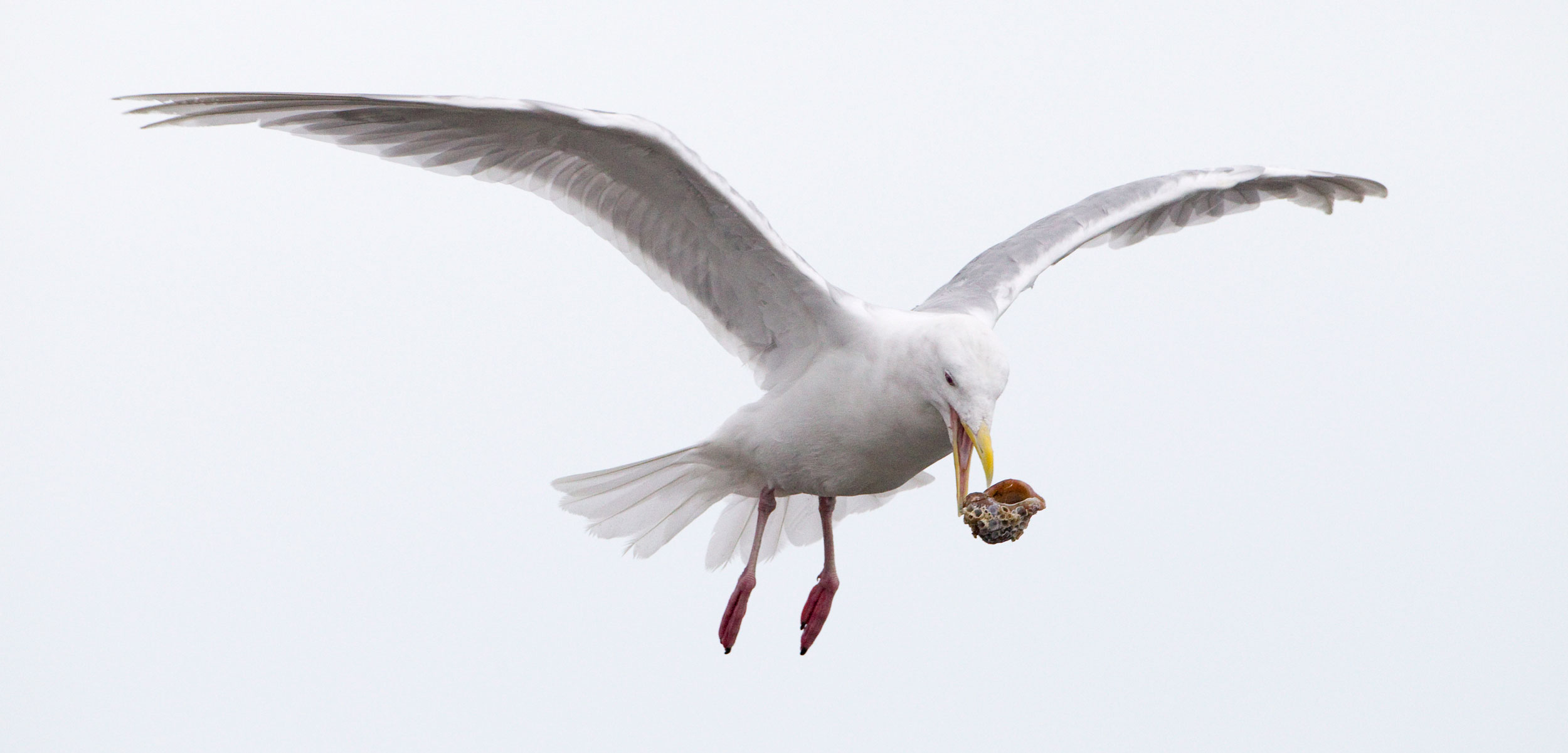How Seashells Feed Trees
Researchers track how the nutrients in shellfish are aiding plants and animals on land.
Article body copy
In summer 2018, Kieran Cox stood on the coast of Calvert Island, 420 kilometers northwest of Vancouver, British Columbia, transfixed by crows dropping clams on rocks to get to the fleshy meal inside.
For the University of Victoria PhD candidate, it was a “lightbulb moment.” The crows were not just getting a snack but were also transporting the nutrients in the shellfish from ocean to land, transferring calcium, phosphorus, vitamin B12, trace minerals, and more to terrestrial plants and animals.
“There’s a First Nations saying that when the tide’s out, the table is set,” says Cox, referring to the bounty of shellfish. “But this saying doesn’t just apply to humans.” The shellfish and even their shells, he says, feed any number of land-based plants and animals.
Researchers have long been studying the movement of marine nutrients from sea to land, particularly thanks to salmon and herring. Both make epic spawning migrations, bringing pulses of scarce nutrients like nitrogen to coastal areas and inland rivers. When a bear catches a salmon, it eats some of the fish but leaves much of the carcass in the forest. Each carcass is effectively a little sack of nitrogen. In a spawning season lasting about 40 days, a single black bear can transport 1,600 kilograms of this fertilizer into the woods. For trees surrounded by salmon remains, studies show that as much as 75 percent of their total nitrogen could come from the fish.
Less dramatic contributions of marine nutrients come to forests in other ways, notes Cox, including washed-up seaweed, the spray of ocean waves, and through the transport of mollusks such as clams, oysters, and mussels.
Cox’s new research paper focuses on how shellfish-derived nutrients find their way inland in the Pacific Northwest. Birds like the gulls and crows he saw on Calvert Island can move a lot of shellfish: piles of gull-deposited shells as big as 100 square meters, for instance, have been documented on the Oregon coast. The birds also excrete enormous amounts of nitrogen and phosphorus in their droppings. Animals that forage in the intertidal, including raccoons, eat a lot of shellfish and transport their nutrients landward. River otters and mink create garbage piles and latrine sites littered with shell fragments and uneaten bits of flesh. Grizzly bears also love shellfish: they have been observed consuming up to two clams per minute and can transport the marine nutrients several kilometers inland through their urine and scat.
But no other animal can compete with humans when it comes to eating shellfish, which has been a staple food on the Pacific coast of North America for at least 13,000 years. There are more than 5,300 recorded shell deposits on the coast of British Columbia alone, some over five meters deep and spanning hundreds of square meters. Indigenous peoples sometimes used waste shells to flatten sloping landscapes, changing the drainage and chemical makeup of soils. The shells themselves can provide calcium for plants and trees for centuries as they break down.
Simon Fraser University aquatic ecologist John Reynolds, a leader in documenting the impact of salmon nutrients on land, says calcium, particularly from clams, is likely the most important shellfish nutrient being brought onto land. Research has shown that red cedar trees growing near places with a long history of occupation and shellfish middens on the BC central coast are, on average, five meters taller than trees growing on sites without piles of shells.
Research documenting the transfer of marine nutrients to our coasts is important, says Reynolds, who was not involved in Cox’s study, because it helps illuminate the interactions between species in the oceans and coastal forests. “Research into cross-habitat connections is helpful to get an overall idea of how things are connected,” he says, “and how we might want to manage them.”

